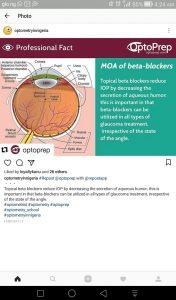What you need to know about the deadly disease of the eye called Glaucoma

In glaucoma, eye pressure is increased and there is progressive damage to the optic nerve. When significant damage is done, blind spots appear in the field of vision and this may lead to total irreversible blindness if unchecked.
What causes glaucoma?
The exact causes of optic nerve damage due to glaucoma are unknown. It is understood that increased eye pressure as seen in most glaucoma cases may play a part in compressing the optic nerve and reducing blood supply to it.
Many people have high eye pressure (ocular hypertension) but do not have glaucoma while others have normal eye pressure but have glaucoma.
Who is affected?
Glaucoma is the second leading cause of blindness globally. Glaucoma is commonest in:
• Age: 60 and above
• Individuals with high eye pressure
• Africans, Hispanic or Asian ancestry
• Individuals with a thin cornea
• Individuals with a family history of glaucoma
• Individuals with near-sightedness or myopia
• Individuals who have had injuries to the eyes in the past
• Individuals who use steroid and steroid containing preparations
• Individuals with certain diseases like diabetes and hypertension
Symptoms
Noted for being a silent disease, symptoms develop slowly over time and many, unfortunately, do not have noticeable symptoms until the later periods when the visual loss is permanent. However, the following are some symptoms seen in glaucoma.
Having one or more of these symptoms show that you need to see an eye doctor for a complete assessment.
• Reduced visual field
• Eye ache or pain that is recurrent
• Excessive tearing or watering
• Dry itchy eyes
• Headaches
• Double vision
• Change in the iris’s colour
• Difficulty focusing on near and far objects
• Difficulty adjusting to dark rooms
• Squinting or blinking due to sensitivity to light or glare
You may require emergency attention if you have:
• Suddenly lost vision in one eye
• Suddenly develop hazy or blurred vision
• Halos or rainbows around your eyes
• Flashes of light or black spots
Treatment
Treatment is a function of the type and severity of glaucoma. case. Since glaucoma cannot be cured, the aim of treatment is to achieve control to slow down disease progression. Treatment cannot reverse damage and is often instituted via:
- Medicines (including eye drops and pills) used to lower eye pressure
- Surgery, which may be conventional or laser-based.
Posted from my blog with SteemPress : http://www.health-today.gq/?p=55